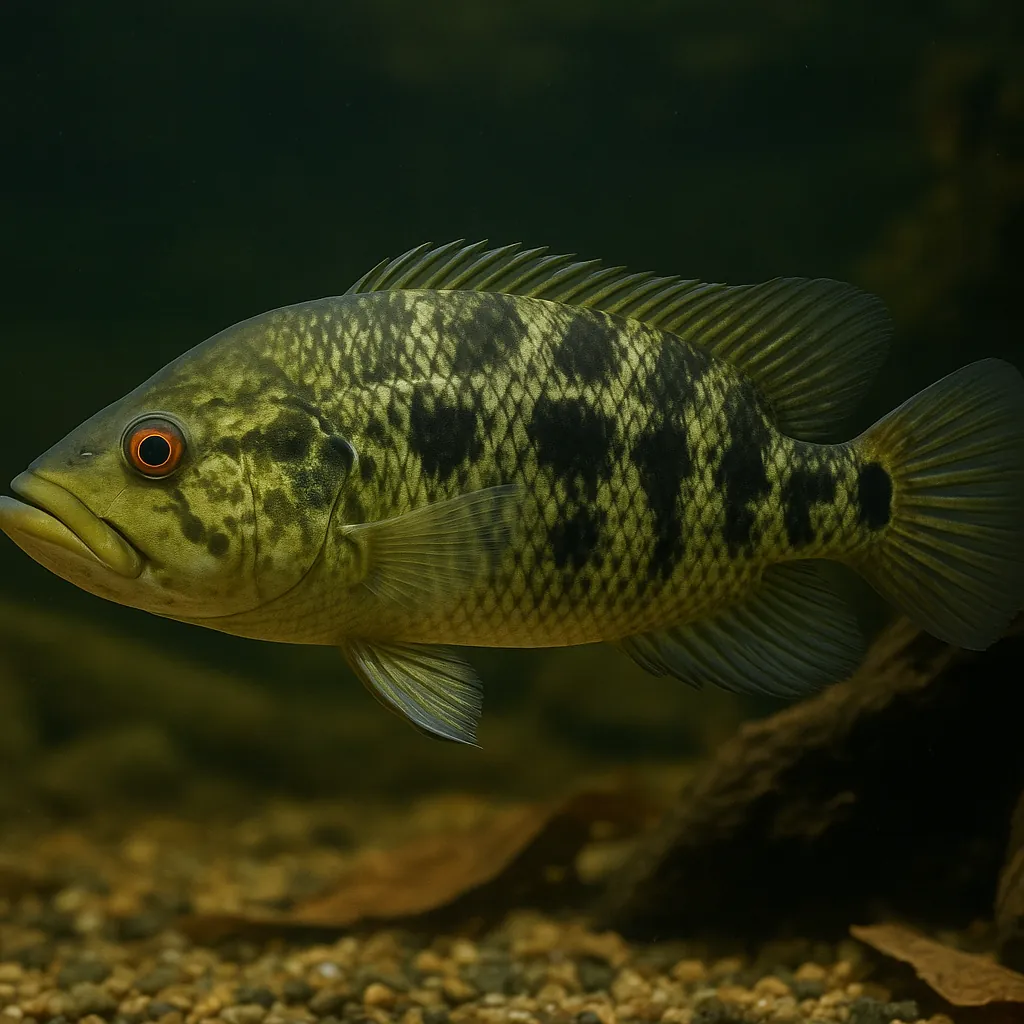
Wolf cichlid
Introduction
The Wolf cichlid (Parachromis dovii), also known as the Rainbow Bass or Guapote, is a striking freshwater fish native to Central America. Renowned for its vibrant coloration and formidable size, this species captivates aquarists seeking a challenging yet rewarding addition to their tanks. However, due to its aggressive nature and specific care requirements, the Wolf cichlid is best suited for experienced fishkeepers prepared to meet its demanding needs.
What makes the Wolf cichlid appealing to aquarists?
Its impressive size, vivid colors, and dynamic behavior make it a standout species for those looking to add a unique and engaging fish to their collection.
Is the Wolf cichlid suitable for beginners?
Due to its aggressive temperament and large size, the Wolf cichlid is recommended for experienced aquarists who can provide the appropriate care and environment.
Care and Environment
Proper care for the Wolf cichlid involves meticulous attention to tank setup, water parameters, and feeding routines to ensure a healthy and thriving fish.
What is the minimum tank size for a Wolf cichlid?
A single adult Wolf cichlid requires a minimum tank size of 660 liters to accommodate its substantial size and territorial behavior. For a pair, a tank of at least 880 liters is recommended.
What are the ideal water parameters for Wolf cichlids?
Maintain water temperatures between 24°C and 28°C, with a pH level ranging from 7.0 to 8.0, and water hardness between 5 to 20 dGH.
How should the tank be decorated for a Wolf cichlid?
Use sand or fine gravel as substrate to accommodate their digging behavior. Incorporate large rocks and driftwood to create hiding spots and territories, but avoid delicate plants, as they may be uprooted.
What type of filtration and lighting is recommended?
Implement a robust filtration system to handle the significant waste produced by these large fish. Moderate lighting is sufficient, with shaded areas created using driftwood or floating plants to mimic their natural environment.
What should be included in a Wolf cichlid's diet?
Provide a protein-rich diet consisting of high-quality cichlid pellets, supplemented with live or frozen foods such as shrimp, krill, and earthworms. Avoid feeding fatty meats like beef heart to prevent health issues.
Are there specific challenges in caring for Wolf cichlids?
Yes, their aggressive nature and large size require careful tank management and monitoring to prevent injuries and ensure a harmonious environment.
Origin and Habitat
Native to Central America, the Wolf cichlid inhabits freshwater lakes, rivers, and streams in Honduras, Nicaragua, and Costa Rica. These environments are characterized by moderate to strong currents, rocky substrates, and abundant aquatic vegetation, providing ample hunting grounds for this apex predator.
What type of water bodies do Wolf cichlids prefer?
They thrive in freshwater environments such as rivers, lakes, and lagoons with moderate to strong currents and rocky substrates.
How does their natural habitat influence their behavior?
As apex predators in their native habitats, Wolf cichlids exhibit strong territorial instincts and aggressive behavior, traits that carry over into the aquarium setting.
Temperament and Compatibility
Wolf cichlids are known for their aggressive and territorial behavior, making them challenging to house with other fish. They are best kept alone or with similarly sized, robust species that can withstand their aggression, such as large catfish or other large cichlids, with caution.
Can Wolf cichlids be kept with other fish?
Due to their extreme aggression, they are best housed alone or with carefully selected, similarly sized and tempered species, if at all.
How can aggression be managed in a tank with Wolf cichlids?
Providing ample space, hiding spots, and closely monitoring interactions can help manage aggression, but cohabitation with other fish is generally not recommended.
Interesting Facts
The Wolf cichlid is not only a formidable predator but also exhibits fascinating behaviors and traits that intrigue aquarists.
What is the origin of the name 'Wolf cichlid'?
The name reflects their aggressive, predatory nature, akin to that of a wolf.
How do Wolf cichlids interact with their owners?
Despite their aggression, they are intelligent and can recognize and interact with their keepers, often following movements outside the tank.
What is unique about their breeding behavior?
They are substrate spawners, with females laying up to 1,500 eggs on flat surfaces, and both parents exhibiting excellent parental care by fiercely guarding their young.
Sources
All information in this article has been gathered from the following reputable sources:
Overview
Recommended Tank Size 232.5 Gallons (for a pair) |
Minimum Group Size 1 |
Minimum Tank Volume 174.4 Gallons |
Maximum Adult Length 29.9 inches |
Average Adult Length 28 inches |
Shoaling (6+ required) No |
Preferred Water Type Freshwater, neutral to slightly alkaline |
Temperature Range (°C) 24–28 |
pH Range 7.0–8.0 |
Water Hardness (dGH) 5–20 |
Typical Lifespan (years) 15 years |